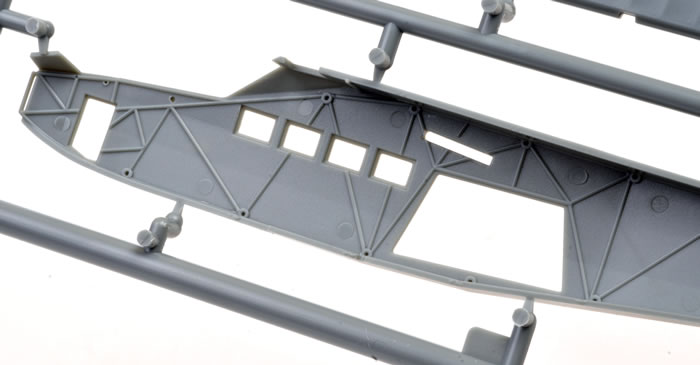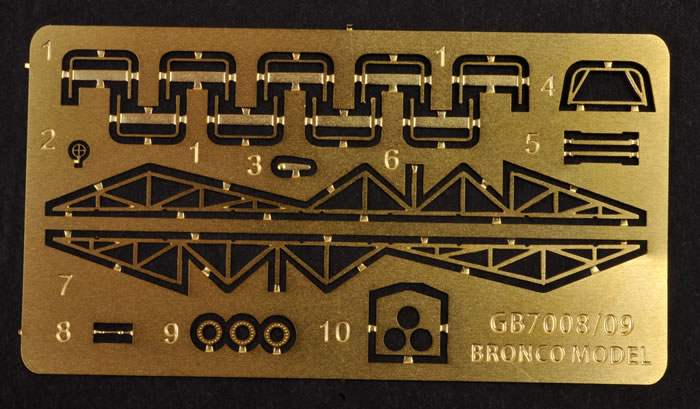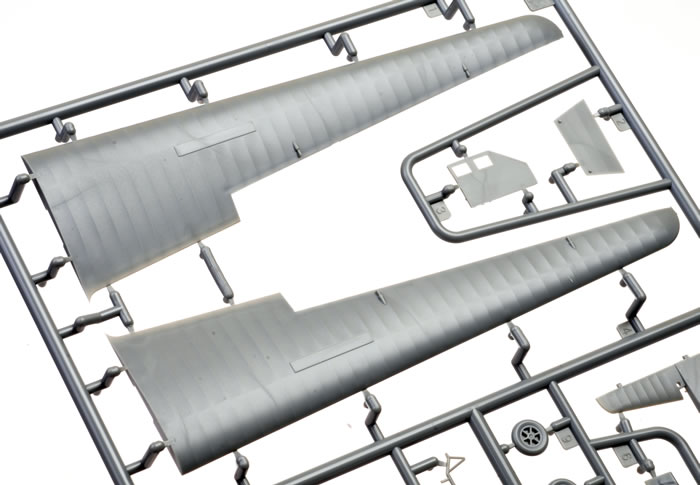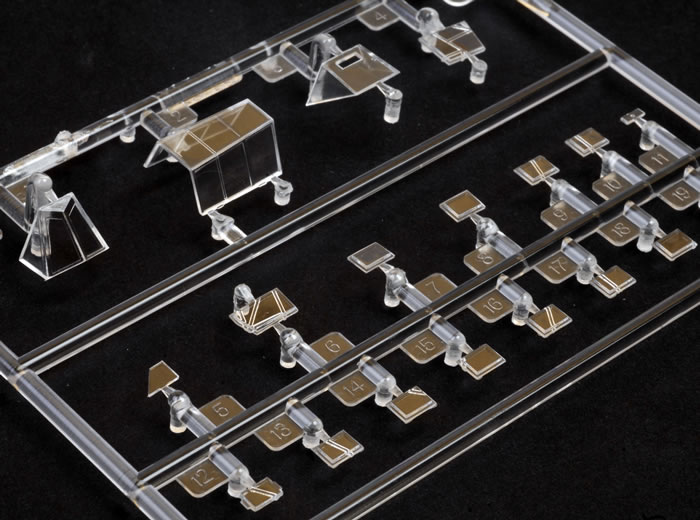DFS 230 B-1
Light Assault Glider

Bronco, 1/72 scale
S
u m m a r y : |
Description and Item No.: |
Bronco Kit No. GB7008 - DFS 230 B-1 Light Assault Glider |
Contents and Media: |
70 parts in light grey plastic; 19 parts in clear plastic; photo-etched fret with 21 parts; one decal sheet covering five subjects. |
Price: |
TBA |
Scale: |
1/72 |
Review Type: |
First Look |
Advantages: |
Subtle and convincing fabric texture; high level of detail including full interior; poseable doors, flaps, elevators and rudder. |
Disadvantages: |
None noted. |
Recommendation: |
This is a great little kit of this important assault glider.
Highly Recommended. |
Reviewed by Brett Green

G.W.H.s 1/48 scale T-33A Shooting Star will be available online from Squadron.com
The DFS 230 was a German transport glider operated by the Luftwaffe in World War II. It was developed in 1933 by the Deutsche Forschungsanstalt für Segelflug (DFS - "German Research Institute for Sailplane Flight") with Hans Jacobs as the head designer. The glider was the German inspiration for the British Hotspur glider and was intended for paratrooper assault operations.
In addition to the pilot, the DFS-230 glider had room for nine men who sat close together on a narrow bench located in the middle of the fuselage (half facing port, half facing starboard). Entry and exit to the cramped interior was by a single side door. The front passenger could operate its only armament, a machine gun. It was an assault glider, designed to land directly on top of its target, so it was equipped with a parachute brake. This allowed the glider to approach its target in a dive at an angle of eighty degrees and land within 20 metres (60 ft) of its target. It carried a freight cargo of about 1,200 kg.

It played significant roles in the operations at Fort Eben-Emael, the Battle of Crete, and in the rescue of Benito Mussolini. It was also used in North Africa. However, it was used chiefly in supplying encircled forces on the Eastern Front such as supplying the Demyansk Pocket, the Kholm Pocket, Stalingrad, and the defenders of Festung Budapest (until February 12, 1945). Although production ceased in 1941, it was used right up to the end of the war, for instance, supplying Berlin and Breslau until May 1945.
By means of a cable running along the tow rope the pilots of the tow-plane and of the freight glider were able to communicate with each other which made blind flying possible, when necessary. The towing speed of the DFS-230 was approximately 190 km/h (116 mph). It dropped its landing gear as soon as it was safely in the air, and landed by means of a landing skid. The DFS-230 could be towed by a Ju-52 (which could tow two with difficulty), a He-111, a Ju-87, He 126, a Bf 110, or a Bf 109. The Ju 52 towed the glider using a 40 metres (131 ft) cable or, in bad weather, a much shorter rigid bar connected by an articulated joint to the tow aircraft. The DFS-230 had the highest glide ratio of any World War Two military glider other than the Antonov A-7. This was because it was thought that the glider had to be capable of a long approach during landing, so that it could be released a considerable distance from the target so the sound of the towing aircraft did not alert the enemy.
Historical text courtesy of Wikipedia
Bronco's 1/72 scale DFS 230 B-1 Light Assault Glider comprises 70 parts in grey plastic, 19 parts in clear, one photo-etched fret with 21 parts and a decal sheet with five Luftwaffe and Romanian options.
The model features full interior detail. The three fuselage hatches may be posed open to display the seat and structural features.

Fuselage frames are moulded to the fuselage sides and supplied separately for the floor. The pilot's instruments are supplied as a decal.
The long bench seat is supplied in plastic with the mount and the short backrests offered on the photo-etched fret.

Surface textures are really very nice. The fabric effect of the wings and other flying surfaces is particularly good, featuring subtle stretch and sag.

All the control surfaces are separate and may be posed to taste.
The fuselage windows are provided as separate clear parts. The canopy is broken down into three parts so the centre section may be posed open if you like.

The jettisonable undercarriage may be fitted or omitted depending on whether the glider is to be depicted before take-off, in flight or after landing. If you choose not to fit the wheels, you'll need to fill two small holes in the lower fuselage.
The relatively modest number of parts should result in a straightforward build. All the little assembly luxuries are present including stout slots for the long wings and locating holes throughout.
The decal sheet offers five options - three German and two Romanian. All five are finished in RLM 65 Light Blue lower surfaces with RLM 70 Black Green and RLM 71 Dark Green upper surfaces.

The decals are well printed, in register and the colours look good.
This is a great little kit of this important assault glider. Highly Recommended.
Thanks to Bronco for the sample
Review Text and Images Copyright © 2017 by Brett Green
Page Created 12 January, 2017
Last updated
12 January, 2017
Back to HyperScale Main Page
Back to Reviews Page

|
Home
| What's New |
Features |
Gallery |
Reviews |
Reference |
Forum |
Search